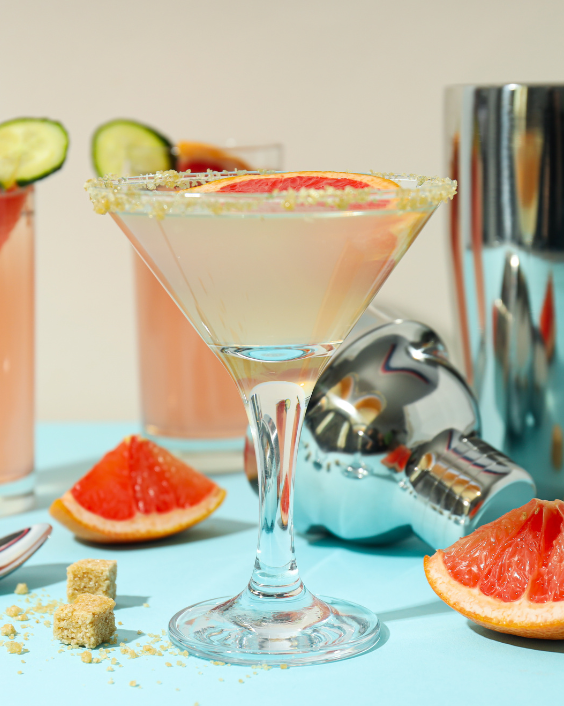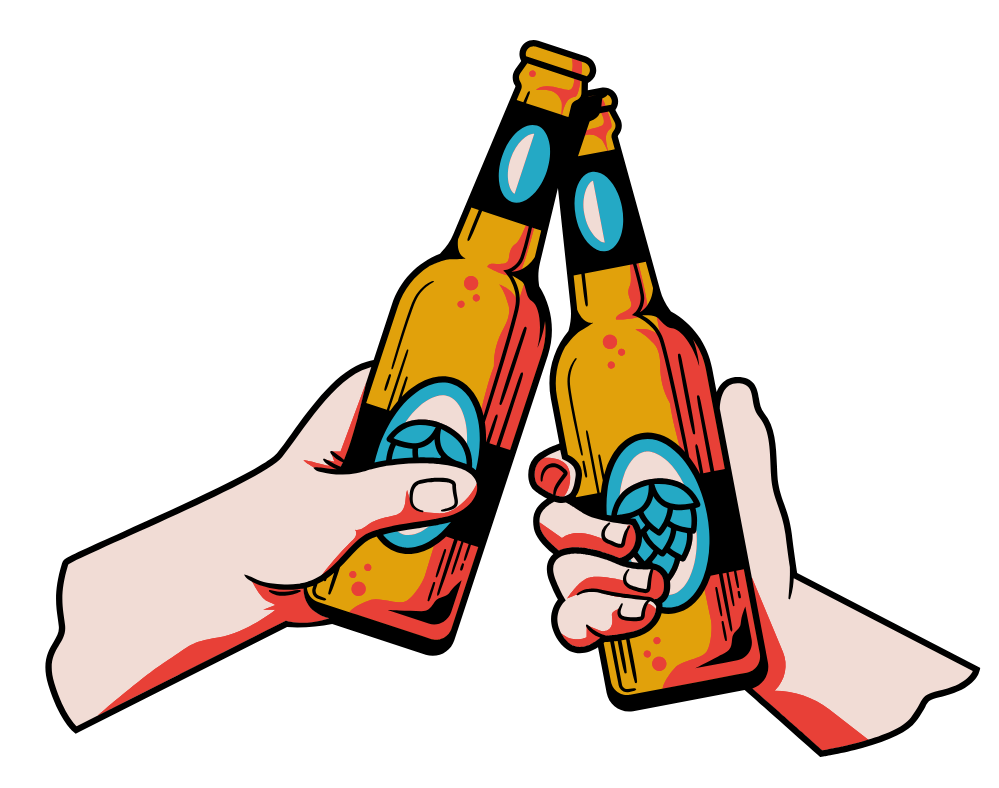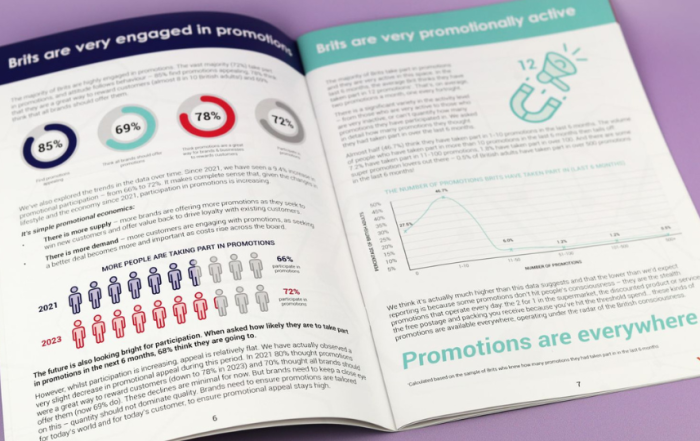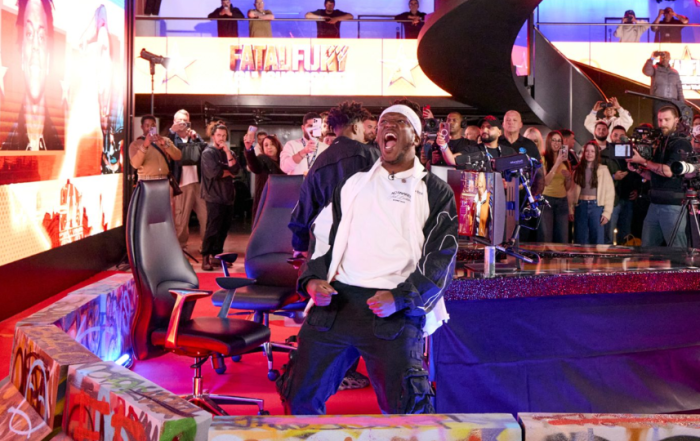

Navigating the New Landscape of Low & No-Alcohol Beverages


Understanding Alcohol Alternatives
Recognising the increasing significance of ‘alcohol alternative’ drinks, the rules governing the advertising of alcohol products required adapting. In May 2024, the CAP Code was updated to officially include alcohol alternatives, specifically those with an ABV of 0.5% or lower.
Application of the alcohol rules would have been heavy-handed considering the key differences in terms of responsibility and safety between alcohol products and their low/no alcohol alternatives. The resulting guidance note and additional rules added to the Alcohol section of the CAP Code sensibly took a more considered approach helping to provide a smoother transition for businesses moving into this sector and a clear direction of travel for brands and agencies planning their low/no alcohol campaigns. These changes are crucial as the market for alcohol alternatives continues to grow rapidly.
In 2023, UK sales of low-alcohol beer increased more than in any other country, reflecting a significant shift in consumer preferences towards healthier lifestyle choices. The rise of ‘sober socialising’, increased financial pressures and more health-conscious attitudes (both physical and mental) means it’s no longer a staple of nights out as in the past. Numerous reports and articles have explored the reduction in drinking alcohol mainly focused on Gen-Z but reports of its demise may be exaggerated.
What Are You Drinking?
With renowned alcohol brands increasingly launching low and no-alcohol options—often using similar branding and imagery as their traditional counterparts—the need for clear guidelines has never been more pressing. So, what exactly constitutes a non-alcoholic drink?
According to the CAP Code, non-alcoholic beverages contain an ABV of 0.5% or lower. These drinks aim to replicate or replace the experience of traditional alcoholic beverages, allowing consumers to enjoy social settings without the effects of alcohol.
In contrast, low-alcohol drinks fall within the range of ABV exceeding 0.5% but not surpassing 1.2%. This category caters to consumers looking for milder options that still deliver some of the taste and experience associated with alcohol.
The CAP Code mandates that all products marketed as alcohol alternatives must explicitly state their ABV, even if it’s 0.0%. This key new addition to the Code is crucial as some consumers may want to avoid any trace amounts of alcohol due to health, religious, or personal reasons. Advertisements must clearly communicate the exact percentage of alcohol in these beverages, ensuring transparency and informed consumer choice.
Understanding Alcohol Alternatives
Recognising the increasing significance of ‘alcohol alternative’ drinks, the rules governing the advertising of alcohol products required adapting. In May 2024, the CAP Code was updated to officially include alcohol alternatives, specifically those with an ABV of 0.5% or lower.
Application of the alcohol rules would have been heavy-handed considering the key differences in terms of responsibility and safety between alcohol products and their low/no alcohol alternatives. The resulting guidance note and additional rules added to the Alcohol section of the CAP Code sensibly took a more considered approach helping to provide a smoother transition for businesses moving into this sector and a clear direction of travel for brands and agencies planning their low/no alcohol campaigns. These changes are crucial as the market for alcohol alternatives continues to grow rapidly.
In 2023, UK sales of low-alcohol beer increased more than in any other country, reflecting a significant shift in consumer preferences towards healthier lifestyle choices. The rise of ‘sober socialising’, increased financial pressures and more health-conscious attitudes (both physical and mental) means it’s no longer a staple of nights out as in the past. Numerous reports and articles have explored the reduction in drinking alcohol mainly focused on Gen-Z but reports of its demise may be exaggerated.
What Are You Drinking?
With renowned alcohol brands increasingly launching low and no-alcohol options—often using similar branding and imagery as their traditional counterparts—the need for clear guidelines has never been more pressing. So, what exactly constitutes a non-alcoholic drink?
According to the CAP Code, non-alcoholic beverages contain an ABV of 0.5% or lower. These drinks aim to replicate or replace the experience of traditional alcoholic beverages, allowing consumers to enjoy social settings without the effects of alcohol.
In contrast, low-alcohol drinks fall within the range of ABV exceeding 0.5% but not surpassing 1.2%. This category caters to consumers looking for milder options that still deliver some of the taste and experience associated with alcohol.
The CAP Code mandates that all products marketed as alcohol alternatives must explicitly state their ABV, even if it’s 0.0%. This key new addition to the Code is crucial as some consumers may want to avoid any trace amounts of alcohol due to health, religious, or personal reasons. Advertisements must clearly communicate the exact percentage of alcohol in these beverages, ensuring transparency and informed consumer choice.

Cross-Promotion & Shared Branding
The CAP Code provides clear directives against cross-promotion with alcoholic beverages. Any reference to alcohol in low/no alcohol ads will be subject to the full alcohol rules to avoid any sense of the ‘stealth marketing’ of alcohol products, including indirect promotion of alcoholic drinks. If an advertisement for a drink at or below 0.5% ABV employs alcohol-related imagery without making the alcohol-free nature of the product explicit, it risks being classified as promoting alcoholic drinks.
Targeting
Another significant element of the new rules is the continued protection of under 18s and their exposure to alcohol ads. They clarify that alcohol alternative ads can’t be directed at or appeal to people under 18, ads for alcohol alternatives are unable to appear in spaces where alcohol advertising is prohibited, and alcohol alternatives can’t be advertised on any platform where more than 25% of the audience is under 18.
Sticking to the theme of age restrictions and responsibility, an important element carried over from the rules governing alcohol is the prohibition of any individual who is or appears to be under 25 featuring in an alcohol alternatives ad. This also continues to apply to any low/no alcohol promotion requiring an entrant to submit user generated content on social media.
Depictions of Pregnancy
Ads for alcohol alternatives with more than 0.0% ABV must not state or imply that these products are suitable during pregnancy or when trying to conceive. Given the lack of comprehensive research regarding the risks of consuming alcohol products at low ABV levels during pregnancy, it is essential for advertisements to convey this information responsibly.
Ads for alcohol alternatives with more than 0.0% ABV must not state or imply that these products are suitable during pregnancy or when trying to conceive. Given the lack of comprehensive research regarding the risks of consuming alcohol products at low ABV levels during pregnancy, it is essential for advertisements to convey this information responsibly.
Raising a Glass Responsibly
There have been no ASA rulings to date since the new regulations were added suggesting the changes have been effective. But this will be tested as the sector continues to expand, the Department of Health and Social Care is committed to shifting the general drinking population towards NoLo alternatives by 2025, underscoring the increasing recognition of these products. The focus on younger people as the sole reason for changing attitudes towards alcohol may be misleading however if greater moderation and the growth of alcohol substitutes enables people to continue enjoying socialising and nights out but with fewer of the undesirable results — personal and societal — of excessive drinking, that may be worth raising a glass of alcohol-free prosecco to. Cheers!
The IPM Legal Advisory Service provides industry-leading guidance on promotional marketing regulations, helping you ensure confidence in compliance. If you have any questions about these regulations or how they may influence your promotional strategies, Contact us at legal@theipm.org.uk.
There have been no ASA rulings to date since the new regulations were added suggesting the changes have been effective. But this will be tested as the sector continues to expand, the Department of Health and Social Care is committed to shifting the general drinking population towards NoLo alternatives by 2025, underscoring the increasing recognition of these products. The focus on younger people as the sole reason for changing attitudes towards alcohol may be misleading however if greater moderation and the growth of alcohol substitutes enables people to continue enjoying socialising and nights out but with fewer of the undesirable results — personal and societal — of excessive drinking, that may be worth raising a glass of alcohol-free prosecco to. Cheers!
The IPM Legal Advisory Service provides industry-leading guidance on promotional marketing regulations, helping you ensure confidence in compliance. If you have any questions about these regulations or how they may influence your promotional strategies, Contact us at legal@theipm.org.uk.
What Do Brits Want from Promotions in 2026
Get ready to unpack the promotional marketing landscape for 2026 as Mando, YouGov and the IPM prepare to launch What Brits Want from Promotions 3.0...
IPM Brings AI Marketing Debate to Westminster
AI in marketing goes on trial at the House of Commons, as MPs and industry leaders debate whether it is a partner or disruptor to promotional marketing.
Piccadilly Lights Goes from Billboard Icon to Experiential Capital
Piccadilly Lights, once the crown jewel of billboard advertising, is now the beating heart of experiential marketing in London, where brands don’t just advertise, they immerse.

Cross-Promotion & Shared Branding
The CAP Code provides clear directives against cross-promotion with alcoholic beverages. Any reference to alcohol in low/no alcohol ads will be subject to the full alcohol rules to avoid any sense of the ‘stealth marketing’ of alcohol products, including indirect promotion of alcoholic drinks. If an advertisement for a drink at or below 0.5% ABV employs alcohol-related imagery without making the alcohol-free nature of the product explicit, it risks being classified as promoting alcoholic drinks.
Targeting
Another significant element of the new rules is the continued protection of under 18s and their exposure to alcohol ads. They clarify that alcohol alternative ads can’t be directed at or appeal to people under 18, ads for alcohol alternatives are unable to appear in spaces where alcohol advertising is prohibited, and alcohol alternatives can’t be advertised on any platform where more than 25% of the audience is under 18.
Sticking to the theme of age restrictions and responsibility, an important element carried over from the rules governing alcohol is the prohibition of any individual who is or appears to be under 25 featuring in an alcohol alternatives ad. This also continues to apply to any low/no alcohol promotion requiring an entrant to submit user generated content on social media.
Depictions of Pregnancy
Ads for alcohol alternatives with more than 0.0% ABV must not state or imply that these products are suitable during pregnancy or when trying to conceive. Given the lack of comprehensive research regarding the risks of consuming alcohol products at low ABV levels during pregnancy, it is essential for advertisements to convey this information responsibly.
Raising a Glass Responsibly
There have been no ASA rulings to date since the new regulations were added suggesting the changes have been effective. But this will be tested as the sector continues to expand, the Department of Health and Social Care is committed to shifting the general drinking population towards NoLo alternatives by 2025, underscoring the increasing recognition of these products. The focus on younger people as the sole reason for changing attitudes towards alcohol may be misleading however if greater moderation and the growth of alcohol substitutes enables people to continue enjoying socialising and nights out but with fewer of the undesirable results — personal and societal — of excessive drinking, that may be worth raising a glass of alcohol-free prosecco to. Cheers!
The IPM Legal Advisory Service provides industry-leading guidance on promotional marketing regulations, helping you ensure confidence in compliance. If you have any questions about these regulations or how they may influence your promotional strategies, Contact us at legal@theipm.org.uk.
News
What Do Brits Want from Promotions in 2026
Get ready to unpack the promotional marketing landscape for 2026 as Mando, YouGov and the IPM prepare to launch What Brits Want from Promotions 3.0...
IPM Brings AI Marketing Debate to Westminster
AI in marketing goes on trial at the House of Commons, as MPs and industry leaders debate whether it is a partner or disruptor to promotional marketing.
Piccadilly Lights Goes from Billboard Icon to Experiential Capital
Piccadilly Lights, once the crown jewel of billboard advertising, is now the beating heart of experiential marketing in London, where brands don’t just advertise, they immerse.





